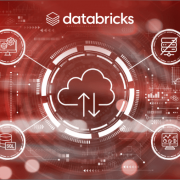Migrating your business to the cloud can be costly, especially if you don’t have a strategic plan to approach the migration. Both business and IT must thoughtfully consider what they want to move to the cloud and how to avoid making costly mistakes. As we all know too well, any technical challenge can be overcome by throwing money at it but that doesn’t make for a sensible cloud migration strategy but that doesn’t make for a sensible cloud migration strategy. Mapping a strategy before you begin your migration will put you in a far better position to optimize your cloud investments without breaking the bank.
Things to consider when migrating to the cloud.
It is important to decide how you want to use the cloud. Take time to understand the advantages cloud computing can offer your organization, which deployment model best fits your needs (whether it be infrastructure-as-a-service, platform-as-a-service, or software-as-a-service), how you want to approach cloud security and, most importantly, who will manage your cloud services. Based on industry statistics and customer feedback, we’re seeing more than a third of all cloud efforts fail and more than three-quarters of migration projects take longer than a year.
It also is common for enterprise IT staff to experience an unexpected learning curve or misalignment with the finance or business team’s investment objectives. Without a migration and spend monitoring plan, companies can expect to see approximately 35% of waste from unused cloud resources and unchecked expenditure. And, let’s face it, no cloud provider wants to provide you with a solution that shrinks your environment or that leads to less spend with them every year.
By strategically plotting out your migration strategy and preparing for the most common cloud challenges, you will be better able to implement your cloud environment, minimize waste, and optimize cloud spend and revenue.
Why CCM?
The rapid advancement of cloud-based data and analytics technology creates new opportunities and new challenges. Most organizations nowadays use multiple cloud vendors and/or platforms and struggle with complex billing. When organizations lack a unified view of their cloud spend, they struggle to realize expected cost savings and spend significant time and effort allocating cloud spend to user groups or departments. Overshooting cloud budget is a recurring theme at almost all enterprises post initial migration to the cloud.
Experts agree that cloud spend is on the rise with estimates projecting accelerating growth in 2021 and beyond. Embarking on a cloud journey without a plan for monitoring your cloud spend will guarantee suboptimal results.
To realize the greatest return, organizations today need a tool to help them monitor their cloud-based investments in a single view. Most organizations are dealing with multiple cloud providers and platforms and must unify data from various inputs, including AWS, Azure, Snowflake, Databricks, etc. They also need a clear understanding of the changing costs of a dynamic infrastructure across services, timeframes, and more. Only then can an organization confidently predict and control its cloud spend.
Our Cloud Cost Monitor, what we call CCM, is an on-prem, fixed-fee solution designed specifically to help organizations, like yours, monitor and optimize their cloud spend. CCM affords you the ability to add up to 10 clouds under the same license and incremental cloud environments without paying a percentage of your overall annual cloud spend. With features such as cost tagging, analytics, and a Python AI recommendation engine, CCM enables smart governance and insights that can help you understand, analyze, and predict your complex cloud spend.
See CCM in action: https://www.infocepts.com/webinars-and-videos/cloud-cost-monitor-by-infocepts/
Recent Blogs

What Retail Media Can Learn from Instacart’s AI Strategy
June 24, 2025

Beyond Chatbots: How Agentic AI Is Automating High-Stakes Business Decisions
June 11, 2025

From Batch to Real-Time: The Future of Data Distribution Using Databricks Delta Sharing
June 4, 2025

Accelerating Databricks Serverless Adoption with Agentic AI & Proven Practices
May 29, 2025


